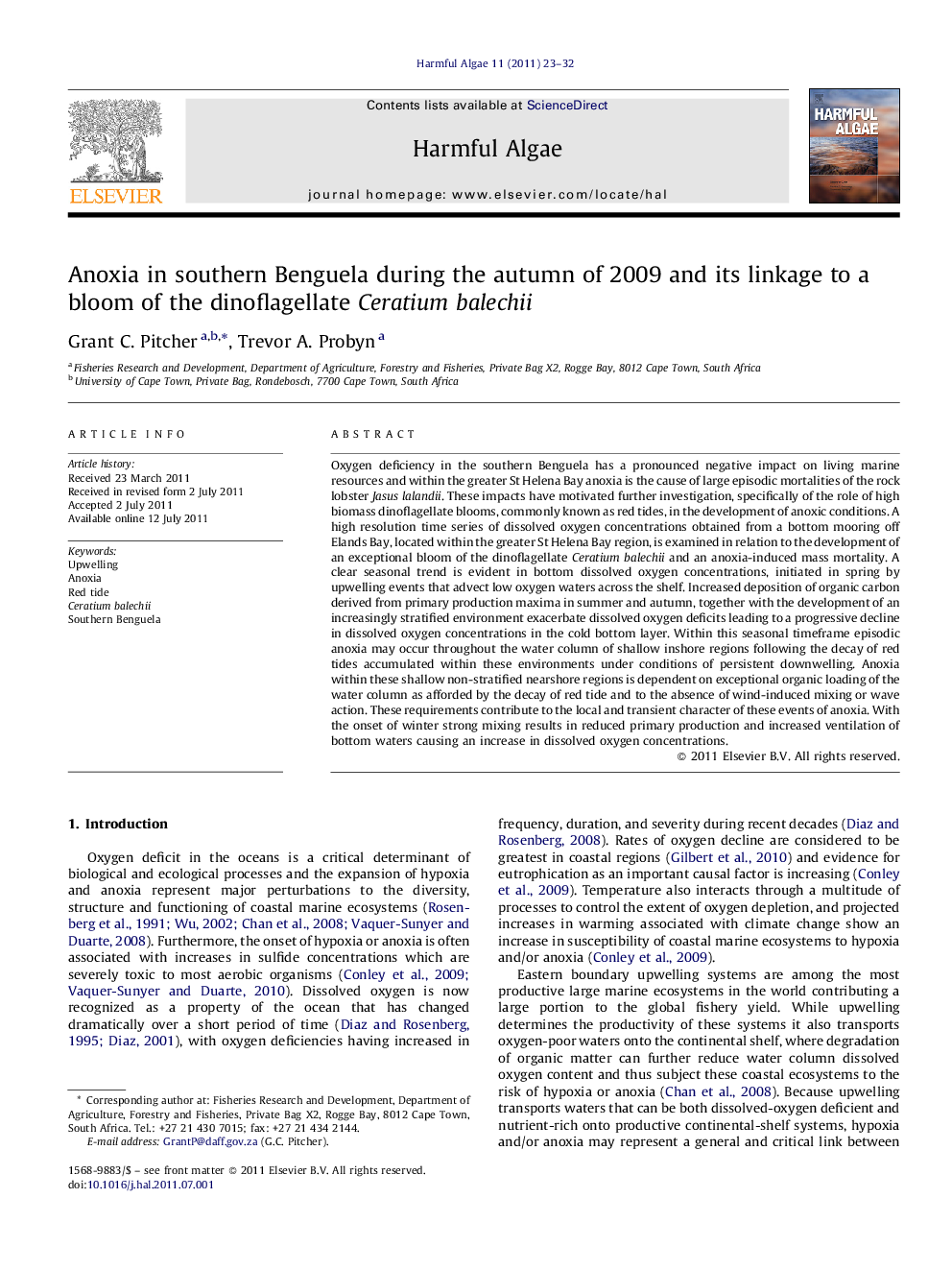| Article ID | Journal | Published Year | Pages | File Type |
|---|---|---|---|---|
| 4545595 | Harmful Algae | 2011 | 10 Pages |
Oxygen deficiency in the southern Benguela has a pronounced negative impact on living marine resources and within the greater St Helena Bay anoxia is the cause of large episodic mortalities of the rock lobster Jasus lalandii. These impacts have motivated further investigation, specifically of the role of high biomass dinoflagellate blooms, commonly known as red tides, in the development of anoxic conditions. A high resolution time series of dissolved oxygen concentrations obtained from a bottom mooring off Elands Bay, located within the greater St Helena Bay region, is examined in relation to the development of an exceptional bloom of the dinoflagellate Ceratium balechii and an anoxia-induced mass mortality. A clear seasonal trend is evident in bottom dissolved oxygen concentrations, initiated in spring by upwelling events that advect low oxygen waters across the shelf. Increased deposition of organic carbon derived from primary production maxima in summer and autumn, together with the development of an increasingly stratified environment exacerbate dissolved oxygen deficits leading to a progressive decline in dissolved oxygen concentrations in the cold bottom layer. Within this seasonal timeframe episodic anoxia may occur throughout the water column of shallow inshore regions following the decay of red tides accumulated within these environments under conditions of persistent downwelling. Anoxia within these shallow non-stratified nearshore regions is dependent on exceptional organic loading of the water column as afforded by the decay of red tide and to the absence of wind-induced mixing or wave action. These requirements contribute to the local and transient character of these events of anoxia. With the onset of winter strong mixing results in reduced primary production and increased ventilation of bottom waters causing an increase in dissolved oxygen concentrations.
► Contextual development of events leading to anoxia in the southern Benguela. ► Two categories of oxygen depletion in the nearshore, seasonal and episodic. ► Progressive seasonal decline with oxygen minima in autumn. ► Local episodic anoxia in shallow inshore environments follows decay of red tides. ► Winter ventilation of bottom waters following mixing.
